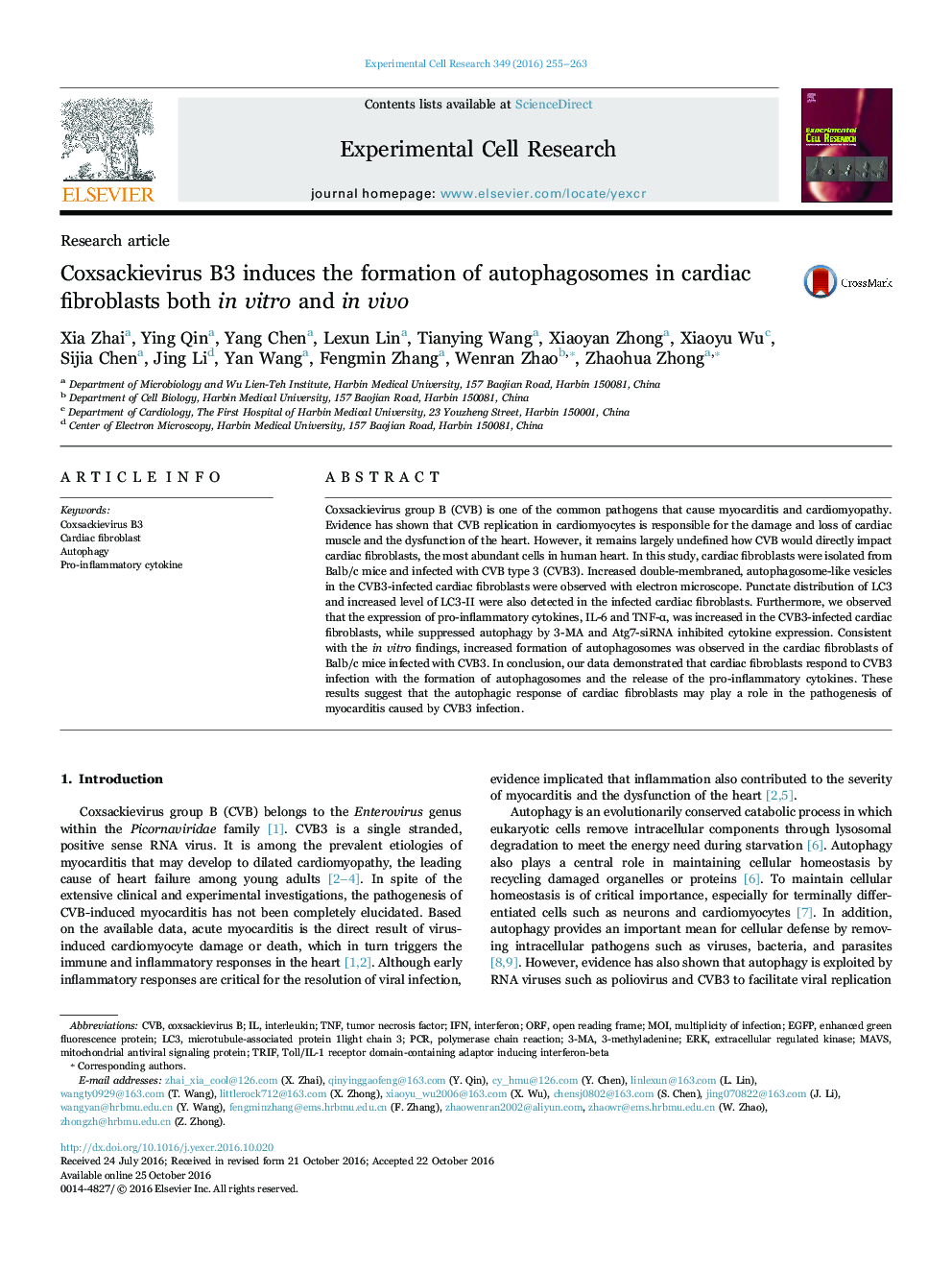| Article ID | Journal | Published Year | Pages | File Type |
|---|---|---|---|---|
| 5527322 | Experimental Cell Research | 2016 | 9 Pages |
â¢CVB3 replication induced autophagosome assembly in primary cardiac fibroblasts.â¢Both IL-6 and TNF-α in cardiac fibroblasts infected by CVB3 were increased.â¢IL-6 and TNF-α were reduced in cardiac fibroblasts when autophagy was inhibited.â¢Autophagosome assembly in cardiac fibroblasts of CVB-infected mice was increased.
Coxsackievirus group B (CVB) is one of the common pathogens that cause myocarditis and cardiomyopathy. Evidence has shown that CVB replication in cardiomyocytes is responsible for the damage and loss of cardiac muscle and the dysfunction of the heart. However, it remains largely undefined how CVB would directly impact cardiac fibroblasts, the most abundant cells in human heart. In this study, cardiac fibroblasts were isolated from Balb/c mice and infected with CVB type 3 (CVB3). Increased double-membraned, autophagosome-like vesicles in the CVB3-infected cardiac fibroblasts were observed with electron microscope. Punctate distribution of LC3 and increased level of LC3-II were also detected in the infected cardiac fibroblasts. Furthermore, we observed that the expression of pro-inflammatory cytokines, IL-6 and TNF-α, was increased in the CVB3-infected cardiac fibroblasts, while suppressed autophagy by 3-MA and Atg7-siRNA inhibited cytokine expression. Consistent with the in vitro findings, increased formation of autophagosomes was observed in the cardiac fibroblasts of Balb/c mice infected with CVB3. In conclusion, our data demonstrated that cardiac fibroblasts respond to CVB3 infection with the formation of autophagosomes and the release of the pro-inflammatory cytokines. These results suggest that the autophagic response of cardiac fibroblasts may play a role in the pathogenesis of myocarditis caused by CVB3 infection.
